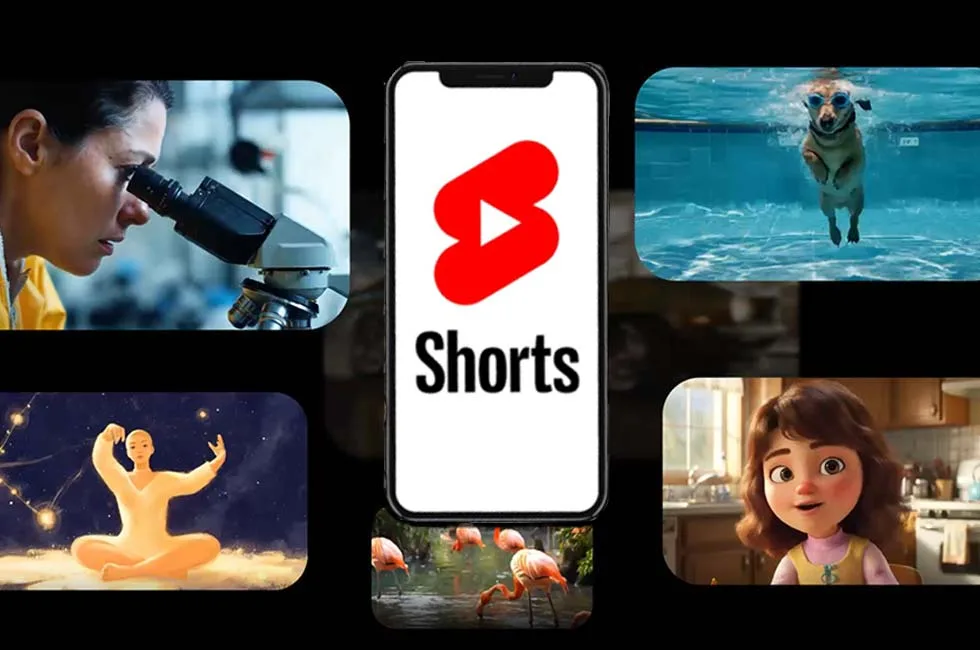YouTube Shorts Integrates Veo 2 for AI Generated Video Clips
YouTube Shorts, the popular short-form video platform, is taking a significant leap forward by integrating Google DeepMind’s cutting-edge AI video model, Veo 2. With this update, creators can now generate hyper-realistic video clips using simple text prompts, unlocking a new realm of creative possibilities. This article delves into the key features of Veo 2, how it works, and what this means for creators worldwide.
Table of Contents
- Introduction to Veo 2 and YouTube Shorts
- Key Features of Veo 2
- How to Use Veo 2 in YouTube Shorts
- Technical Details of Veo 2
- Initial Rollout and Future Expansion
- FAQ
- Conclusion

YouTube Shorts integrates Veo 2
1. Introduction to Veo 2 and YouTube Shorts
YouTube Shorts has become a go-to platform for creators looking to share short, engaging videos. To further enhance its appeal, YouTube has partnered with Google DeepMind to integrate Veo 2, an advanced AI video generation model. This feature allows creators to generate high-quality video clips by simply entering a text prompt, making video creation easier and more accessible than ever before. With Veo 2, creators can produce realistic scenes, dynamic movements, and cinematic effects without needing extensive technical skills or resources.
This integration represents a significant step in the evolution of AI-powered content creation, enabling creators to focus more on storytelling and creativity while relying on Veo 2 to handle the technical aspects of video generation.
2. Key Features of Veo 2
Veo 2 introduces several groundbreaking features that set it apart from previous AI video models. Here’s a closer look:
2.1 Enhanced Realism and Faster AI Processing
Veo 2 excels in understanding real-world physics, human movement, and environmental interactions. The result is video output that feels natural and lifelike. Additionally, Veo 2 processes requests faster, reducing wait times for creators.
2.2 Advanced Camera Controls
Creators can specify the style, lens, or cinematic effect they want for their videos. For example, a user can generate a “vintage-style” video shot with a fisheye lens or a high-definition cinematic scene with soft lighting.
2.3 Built-in Transparency with SynthID
To address concerns about misinformation, all AI-generated content will include an embedded digital watermark using DeepMind’s SynthID tool. This ensures transparency and helps viewers identify synthetic media.
3. How to Use Veo 2 in YouTube Shorts
YouTube has made it easy for creators to access Veo 2’s capabilities. Here’s a step-by-step guide:
3.1 Generating Video Backgrounds
- Open the Shorts camera in the YouTube app.
- Select Green Screen and navigate to Dream Screen.
- Enter a text prompt describing your desired background (e.g., “sunset over the ocean”).
- Veo 2 will generate a dynamic video background based on your input.
3.2 Creating Standalone Video Clips
- Open the Shorts camera and tap Add to access the media picker.
- Select Create at the top of the screen.
- Enter a text prompt and choose an image from your library or the AI’s suggestions.
- Tap Create Video and select the desired clip length.
- Your AI-generated video will be ready to share or edit further.
4. Technical Details of Veo 2
Veo 2 is a state-of-the-art AI model that builds on Google DeepMind’s expertise in video and image generation. Here are some of the technical highlights:
4.1 Realistic Motion and High-Quality Output
- Supports resolutions up to 4K, ensuring crisp and clear visuals.
- Simulates real-world physics, such as gravity, fluid dynamics, and lighting.
4.2 Benchmark Performance
- Veo 2 outperforms other video generation models in head-to-head comparisons.
- Human raters consistently prefer Veo 2 outputs for their realism and prompt accuracy.
4.3 Extensive Prompt Understanding
Veo 2 can interpret both simple and complex instructions, enabling creators to experiment with a wide range of visual styles and scenarios.
5. Initial Rollout and Future Expansion
The Veo 2-powered feature launched on Thursday for creators in the U.S., Canada, Australia, and New Zealand. YouTube plans to expand availability to other regions in the coming months, ensuring that creators worldwide can benefit from this innovative tool.
6. FAQ
Q1: Which languages does Veo 2 support?
Currently, Veo 2 supports English for text prompts. Additional languages may be added in future updates.
Q2: Is Veo 2 available for free?
The feature is included in YouTube Shorts, which is free to use. However, certain advanced features may require a YouTube Premium subscription in the future.
Q3: How does Veo 2 differ from other AI video tools?
Veo 2 stands out for its realistic motion simulation, high-quality output, and advanced camera controls. It also integrates DeepMind’s SynthID for transparency, ensuring AI-generated content is clearly labeled.
Q4: Can I edit AI-generated videos after creating them?
Yes, creators can further edit their AI-generated videos using YouTube Shorts’ built-in editing tools or third-party software.
Q5: Will Veo 2 be available for long-form YouTube videos?
As of now, Veo 2 is exclusive to YouTube Shorts. However, its capabilities could be extended to long-form videos in the future.
7. Conclusion
The integration of Veo 2 into YouTube Shorts marks a new era for AI-powered content creation. By simplifying the video generation process and offering advanced features like realistic motion and cinematic effects, Veo 2 empowers creators to produce high-quality content with minimal effort.
As the feature rolls out globally, it promises to democratize video creation, making professional-grade tools accessible to everyone. Whether you’re a seasoned creator or a newcomer, Veo 2 opens up endless possibilities for storytelling and creative expression.
Stay tuned for further updates as YouTube and Google DeepMind continue to innovate in the AI and video generation space!